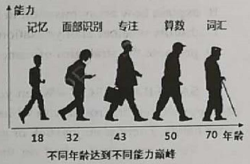-
Over the years, the term Wall Street has come to represent the world of high finance, but it’s also just a street! And before that, it was actually a wall--hence the name.
The wall used to protect New Yorkers from attacks by Native American Indians. But eventually, the English knocked the wall down. There are a number of important landmarks on Wall Street. Here are a few of them.

TRINITY CHURCH
Trinity Church is located at the intersection of Wall Street and Broadway. The original church was destroyed in the Great New York City fire of 1776. The current church was built in 1846. These days, Trinity Church has several choirs, and offers free classical and contemporary music concerts.

FEDERAL HALL NATIONAL MEMORIAL
Federal Hall was built in 1700 as New York’s City Hall. Later, it became the first capitol building of the United States of America. It was the place where George Washington was inaugurated as the first president of the United States in 1789, and it is also where the United States Bill of Rights was drafted. These days, the building is run by the National Park Service as a museum commemorating the historic events.

THE NEW YORK STOCK EXCHANGE
The New York Stock Exchange is a neo-classical building located at 11 Wall Street. It is the world’s largest stock exchange by market capitalization of its listed companies. You can visit the building and watch from the third floor as traders buy and sell shares from companies around the world.

BANKERS TRUST COMPANY BUILDING
At 14 Wall Street you can find the Bankers Trust Company Building. It’s a 227-metre skyscraper that occupies an entire block. The building was originally the headquarters of Bankers Trust. These days, it serves as the American headquarters of Deutsche Bank.
1.How did Wall Street acquire its name?
A.Local New Yorkers named it after a certain man.
B.Some Native American Indians gave it the name.
C.The street got its name due to the original architecture there.
D.The English adopted the name in memory of the original wall.
2.Among the important landmarks, which used to stage certain political events?
A.Trinity Church.
B.Federal Hall National Memorial.
C.The New York Stock Exchange.
D.Bankers Trust Company Building.
难度: 简单查看答案及解析
-
The possibility of self-driving robot cars has often seemed like a futurist’s dream, years away from materializing in the real world. Well, the future is apparently now. The California Department of Motor Vehicles began giving permits in April for companies to test truly self-driving cars on public roads. The state also cleared the way for companies to sell or rent out self-driving cars, and for companies to operate driverless taxi services. California, it should be noted, isn’t leading the way here. Companies have been testing their vehicles in cities across the country. It’s hard to predict when driverless cars will be everywhere on our roads. But however long it takes, the technology has the potential to change our transportation systems and our cities, for better or for worse, depending on how the transformation is regulated.
While much of the debate so far has been focused on the safety of driverless cars (and rightfully so), policymakers also should be talking about how self-driving vehicles can help reduce traffic jams, cut emissions and offer more convenient, affordable mobility options. The arrival of driverless vehicles is a chance to make sure that those vehicles are environmentally friendly and more shared.
Do we want to copy - or even worsen - the traffic of today with driverless cars? Imagine a future where most adults own individual self-driving vehicles. They tolerate long, slow journeys to and from work on packed highways because they can work, entertain themselves or sleep on the ride, which encourages urban spread. They take their driverless car to an appointment and set the empty vehicle to circle the building to avoid paying for parking. Instead of walking a few blocks to pick up a child or the dry cleaning, they send the self-driving minibus. The convenience even leads fewer people to take public transport - an unwelcome side effect researchers have already found in ride-hailing (叫车)services.
A study from the University of California at Davis suggested that replacing petrol-powered private cars worldwide with electric, self-driving and shared systems could reduce carbon emissions from transportation 80% and cut the cost of transportation infrastructure and operations 40% by 2050. Fewer emissions and cheaper travel sound pretty appealing. The first commercially available driverless cars will almost certainly be fielded by ride-hailing services, considering the cost of self-driving technology as well as liability and maintenance issues (责任与维护问题). But driverless car ownership could increase as the prices drop and more people become comfortable with the technology.
Policymakers should start thinking now about how to make sure the appearance of driverless vehicles doesn’t extend the worst aspects of the car-controlled transportation system we have today. The coming technological advancement presents a chance for cities and states to develop transportation systems designed to move more people, and more affordably. The car of the future is coming. We just have to plan for it.
1.As for driverless cars, what is the author’s major concern?
A.Safety. B.Side effects. C.Management. D.Affordability.
2.What does the underlined word “fielded” in Paragraph 4 probably mean?
A.Shared. B.Replaced. C.Reduced. D.Employed.
3.What is the author’s attitude to the future of self-driving cars?
A.Positive. B.Doubtful. C.Disapproving. D.Sympathetic.
难度: 中等查看答案及解析
-
You’re walking down a quiet street and suddenly you hear some footsteps. Undoubtedly, it means that there’s someone around. But have you ever wondered why it occurs to us that it’s someone else’s footsteps, not ours?
According to a new study published in the journal Nature in September, this phenomenon arises from a function in our brain to ignore the noise we make ourselves.
In order to explore how our brain does this, a group of scientists carried out an experiment with mice at Duke University. The research entered on an intuition-that we are usually unaware of the sound of our own footsteps-as a vehicle for understanding larger neural phenomena; how this behavior reveals the ability to monitor, recognize, and remember the sound of one’s own movements in relation to those of their larger environments.
In the experiment, research controlled the sounds of a group of mice could hear, reported Science Daily. During the first several days, the mice would hear the same sound each time they took a step. This was just like “running on a tiny piano with each key playing exactly the same note”, senior study author Richard Mooney, a professor of neurobiology at Duke University, told Live Science.
Scientists found that their auditory cortex (听觉皮层) – the area of the brain that processes sound –became active at first but decreased its response to the sound after two or three minutes when the mice became familiar with it.
“ It’s almost like they were wearing special headphones that could filter (过滤) out the sound of their own movements.” David Schneider, an assistant professor at the Center for Neutral Science at New York University, told HuffPost.
But once the sound changed, their auditory cortex became active again. This suggests that the “sensory filter” in a mouse’s brain could help it detect new sounds or abnormal noise in the environment easily after tuning out familiar sounds.
“For mice, this is really important,” said Schneider. “They are prey animals, so they really need to be able to listen for a cat creeping up on them, even when they’re walking and making noise.
Being able to ignore the sounds of one’s own movements is likely important for humans as well. But the ability to predict the sounds of our own actions is also important for more complex human behaviors such as speaking or playing an instrument.
“When we learn to speak or to play music, we predict what sounds we are going to hear – such as when we prepare to strike keys on a piano – and we compare this to what we actually hear, “explains Schneider. “We use mismatches between expectation and experience to change how we play – and we get better over time because our brain is trying to minimize these errors.”
1.What can be discovered about mice in the experiment?
A.Their brain responds inactively to the familiar sounds
B.They are able to detect sounds other animals don’t notice.
C.They cannot identify different sounds except their own footsteps.
D.Different areas of their brain are responsible for different sounds.
2.What’s the function of the sensory filter?
A.Ignoring the sounds made by our companions.
B.Getting used to abnormal or unfamiliar sounds.
C.Identifying the sounds from a larger environment.
D.Being sensitive to the sounds of our own movement.
3.Why can a good symphony conductor immediately recognize it when a wrong note is played?
A.He has the ability to match the wrong note with the instrument player.
B.He has an intuition that he should ignore the sound of his own movement.
C.He has a low expectation and knows where players are likely to make errors.
D.He has a good prediction of how each note should be played in the orchestra.
4.What can be inferred from the passage?
A.Noise-filtering ability ensures us a quiet and undisturbed environment.
B.The ability to ignore familiar noises helps to detect potential dangers.
C.The activeness of auditory cortex determines our activity performance.
D.Sound-predicting ability seems not so important for humans as for animals.
难度: 困难查看答案及解析
-
Recently I rolled into a local restaurant to try an Impossible Burger, an all-plant meat-like pie invented by the Silicon Valley company Impossible Foods. It’s famous for having a weirdly chewy, even bloody, meat-like quality, a surprising verisimilitude (逼真) that has made it “perhaps the country’s most famous burger,” as New York magazine recently wrote. One bite into its gorgeous, smoky flavor, and I was convinced.
This is good news, because the time has come to mass-produce fake meat, fast. Why? Because in the fight to ease climate change, meat replacement is one of the lowest-hanging fruits.
Meat production chews up land and lets out methane(沼气) by the kiloton, accounting for about two-thirds of all greenhouse gas emissions from agriculture. A University of Oxford study recently found that, to keep global warming below 2 degrees this century, we need to be eating 75 percent less beef and 90 percent less pork globally. “Without concentrated change, we really risk going beyond key environmental limits,” Marco Springmann, one of the Oxford researchers, warns me.
Diets are culturally enshrined(神圣的), so changing them will be hard. Fake meat can help camouflage(掩饰) that dramatic transformation with slight adjustment.
Still, even the most exceptional substitutes for meat face a huge challenge if they’re going to replace 75 to 90 percent of beef and pork. The first taste of an Impossible Burger-a moment when low expectations work a powerful magic in the product’s favor-is one thing. But how do you keep meat-eaters asking for more after their sixth, and their 26th?
Fortunately, the science here is playing an important role. Impossible Foods owes much of its appeal to a bioengineering process that turns out big, blood-red tanks of “heme,” a crucial molecule that gives veggie(素食主义者) meat “that slightly metallic bloody flavor,” as David Lipman, chief science officer of Impossible Foods, tells me. Meanwhile, “cultured meat,” created by growing actual animal cells in a basin, is becoming a reality. In New York, the scientists at Ocean Hugger Foods have engineered a process to transform tomatoes into mock tuna. And over in the Netherlands, a company called The Vegetarian Butcher is developing a Nespresso-style device: You pour in a bag of vegetable protein and out pops fake meat. The company aims to release it in two years.
To get to true mass adoption, fake meat will need to compete favorably with the real thing on multiple fronts. Impossible Foods’ goal is to drive the price of its product below that of Safeway’s 80/20 hamburger meat, at which point people will simply vote with their wallets. The new industry also wants to improve on animal flesh in various ways. Fake meat will outcompete traditional meat because “you won’t need to refrigerate it if you’re making it as you go,” co-founder Niko Koffeman says. That’d give unmeat an enormous advantage for energy-poor developing regions. Plus, fake meat could provide more choices. “You could have very soft and tender meat for elderly people,” Koffeman adds. “You could have a custom meat for whatever you need.”
We could speed this dietary shift with smart public policy too. Beginning in 2006, New York City cut the number of adults consuming one or more sugary drinks per day by 35 percent by running appealing public service campaigns and requiring the labeling of their high calorie counts in fast-food restaurants. Imagine similar measures promoting fake meat: “Save the planet, bite by bite.” Save your health too. Speaking of your conscience, industrial-scale animal farming is ethically unpleasant.
You can tell the world is shifting this way, because the ranchers (牧场主) are nervous. Last year, the US Cattlemen’s Association asked the government to define “meat” as a product “obtained directly from animals.” That anxiety, which is no doubt caused by science, goes to show that this grand shift isn’t impossible.
1.The author was convinced by the Impossible Burger because .
A.it looks like a traditional meat burger
B.it contains no meat but tastes like meat
C.its flavor is different from that of normal ones
D.more vegetables are used in the burger
2.What does the author mean by saying “lowest hanging fruits” in paragraph 2?
A.A task that is difficult to fulfill. B.An approach that is economical.
C.A goal that is easy to achieve. D.A product that is environment-friendly.
3.The author is most likely to agree that .
A.fake meat cannot change people’s dietary habits
B.fake meat is worthy of investment for its great potential
C.a decline in meat consumption can relieve global warming
D.fake meat will replace real meat because of its lower price
4.Fake meat has an advantage over traditional meat in that .
A.fake meat will not be necessarily stored in a refrigerator
B.the price of fake meat will be one-fourth of the traditional meat’s
C.fake meat will win over the older people thanks to its quality
D.fake meat has a bloody flavor that is not found in traditional meat
5.What can be inferred from the last paragraph?
A.The US government doesn’t give enough support to ranchers.
B.The world will probably accept the idea of fake meat.
C.People don’t like to eat meat produced by the ranchers now.
D.The definition of meat has been revised because of fake meat.
6.Which is probably the suitable title for the passage?
A.Fake meat or traditional meat, must we choose? B.Traditional meat, an environment killer.
C.Let’s speed up the dietary shift. D.Let’s welcome the fake meat.
难度: 困难查看答案及解析
